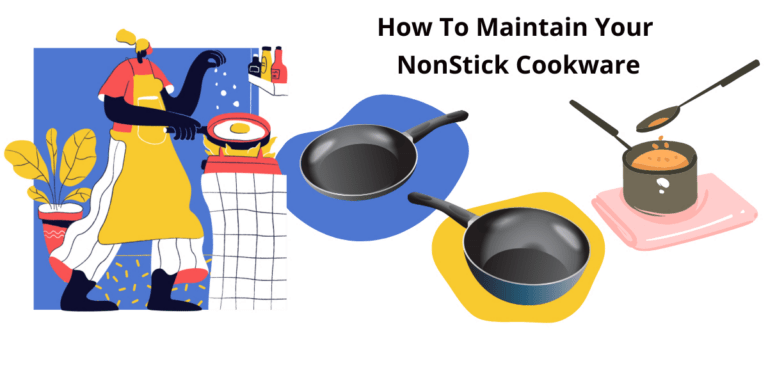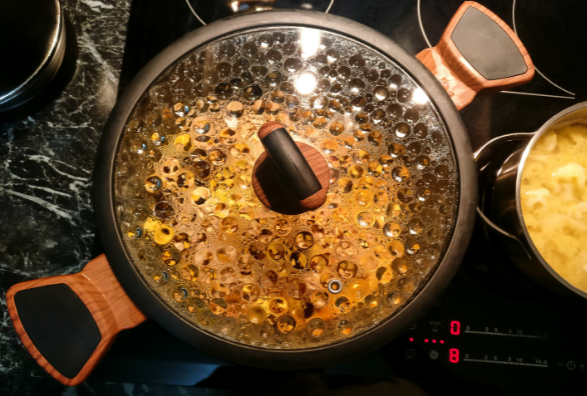Facts and Benefits of Silicone Cookware
Silicone cookware is very popular with a lot of benefits. It can resist chemical leaching and be used in high-temperature cooking without fear of breaking. Silicone kitchenware is also non-stick and durable enough to last for years.
Silicone kitchenware was introduced in the late 2000s as an alternative to traditional non-stick cookware. Silicone kitchenware is applied by “sintering” the material under high heat, curing it to a solid state. Although silicone isn’t a metal, it can be treated with a similar process: combining silicon and metals. It is then “sintered” under high heat until the formed silica-metal bonds.
Continue reading to learn more about silicone kitchenware facts and benefits.
What is silicone?
Silicone is a polymer that can be made in various colors, shapes, and sizes. It contains bonded silicon, oxygen, and other elements like carbon and hydrogen. It is a useful material in cookware because it can withstand high temperatures without cracking.
Silicone is a type of plastic that has been derived from polysiloxane. It can be used as an industrial material, and it’s also a popular household material.
Silicone has properties similar to both rubber and plastic. The material is durable and long-lasting. It doesn’t react with food and is non-stick. It’s also safe to use in the oven and on induction cooktops. This makes it the prime material of cookware because of its nonstick coating. Silicone is also safe for use on a wide variety of cooking surfaces. There are many colors offered, and they are easy to clean with just soap and water.
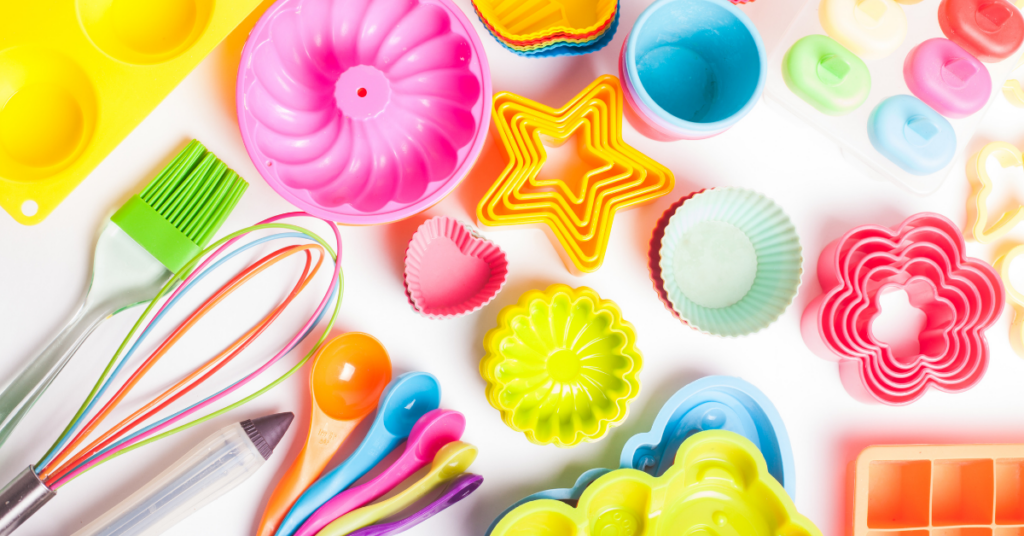
What material is silicone cookware made of?
Silicone kitchenware is made from a type of silicone called polydimethylsiloxane or PDMS. In its raw form, PDMS is a colorless liquid. It is typically mixed with other ingredients and then poured into molds to create silicone rubber. Silicone is non-toxic, has a low coefficient of friction, and is completely nonstick.
Silicone is a polysiloxane type, meaning it contains oxygen and silicon atoms. It’s also made up of carbon atoms, hydrogen atoms, and a few other elements.
How do I know if my current cookware is silicone or not?
Silicone is a type of plastic that can be made into any shape and is used in many different products. Silicone has been around for decades and is a trusted material. The only way to know if your current cookware is silicone or not would be to test it yourself.
Silicone cookware for kids
Silicone kitchenware for kids is a relatively new phenomenon, as the material was not widely used until recently. Silicone does not retain odors or flavors and is resistant to staining. It is also heat resistant and can be used in the oven, on top of a stove, or in the microwave. Silicone is usually easier to clean than other cookware because it does not warp or dent. There is no reason why this material cannot be used to cook with. There is often a misconception that silicone sticks to pans and will not hold the heat very well, which can cause uneven heating or undesirable heat distribution in a pan. This applies only to circumstances where the pots and pans are overheated or were not used properly, causing a buildup of carbonized matter which can affect cooking results. Since silicone is tough and durable, it makes a great choice for kids who are still learning to cook. Silicone kitchenware has various benefits that will help you decide whether or not it is worth buying.
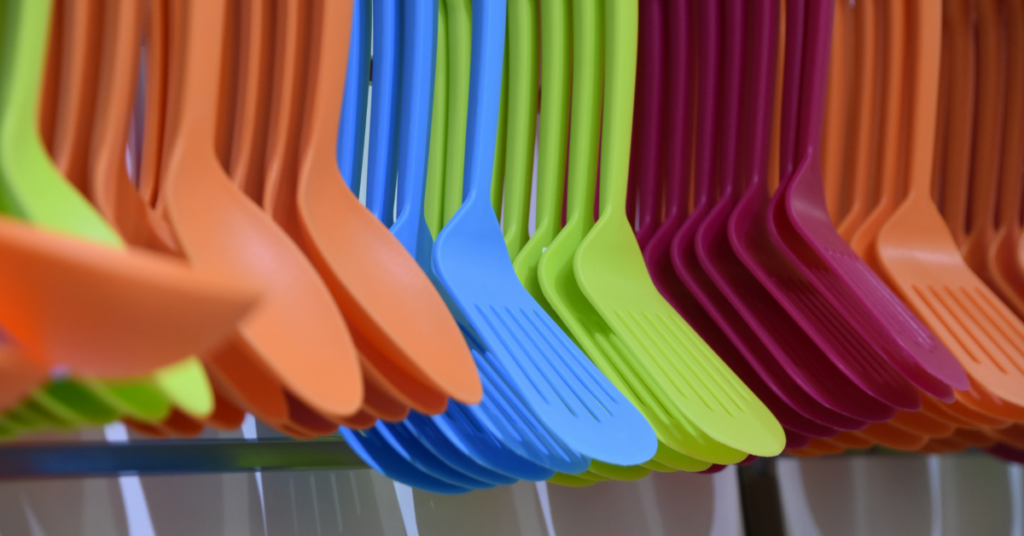
What are the benefits of silicone cookware?
Silicone kitchenware has many benefits. Silicone kitchenware is popular because of its simplicity and ease of use. For example, silicone pots are easy to clean – rinse them under the faucet and shake them dry. Silicone kitchenware is also durable, heat-resistant, and non-stick. Silicone kitchenware is a durable material that does not need to worry about shards after knocking on the floor. It also doesn’t impart any flavors into food which is a major benefit to those who cook with it. Silicone pan covers are an option to replace clingfilm. Silicone kitchenware is made from rubber silicon, and this substance also has a high heat-resistant property.
Silicone kitchenware is easy to store. It can be flattened for storage which makes it very convenient. It also has a low emissivity, making it a safer option for any stovetop.
Silicone is a material that has been used for many years in the food industry. Silicone pans are made of food-safe and dishwasher-safe materials that are easy to clean and safer for your family.
What are the benefits of silicone for cookware over other materials?
Silicone is a material that is flexible and non-stick. It is a good material for a nonstick cookware set because it can retain heat and resist bacteria growth. Silicone also can prevent any flavor from transferring. Because silicone is a natural material, it is dishwasher safe and does not make your food taste metallic.
Silicone kitchenware is made up of materials that are non-reactive and durable. They stay flexible, but they also don’t break easily. Silicone is also a good conductor of heat and can get up to 500 degrees Fahrenheit. Silicone is a material that has been used for many years in the kitchen—silicone kitchenware benefits from being durable, lightweight, and easy to clean. Silicone is also a safe and flexible material for cooking, making it more suitable than other materials such as metal or ceramic.
Silicone kitchenware is a popular material for its health benefits. It offers easy clean-up and longevity in the kitchen. Silicone has a smooth surface that does not retain food odors or flavors. It is also non-stick and can be used to cook foods without oil. Silicone kitchenware is cheaper, durable, and dishwasher safe. There are many reasons why silicone kitchenware is a great choice for your kitchen utensils.
Is Silicone Cookware Safety Confirmed for Usage?
The safety of silicone cookware is often debated. Silicone kitchenware is not unsafe, but there are a lot of controversies. The silicone material is non-sticky and safe to use, but it has some disadvantages. According to the Environmental Working Group, there are big variations in the quality of silicone kitchenware, and many manufacturers use toxic chemicals to create them.
Silicone kitchenware is a great material to use for baking and cooking. You should take some safety precautions before using your silicone products, such as checking to make sure that the product is pure silicone. Silicone is safe up to recommended temperature, which ranges from 250 °F (121 °C) to 450 °F (232 °C). Other materials can break down at these temperatures.
Silicone kitchenware is becoming increasingly more popular and now has various benefits. There’s debate as to whether coatings end up leaching into food. Studies use hyperbolic language and test conditions that don’t match real-life use. The data do not prove the purpose of avoiding using silicone kitchenware. Silicone cookware is a great way to avoid chemicals and carcinogens usually found in other types of cooking ware.
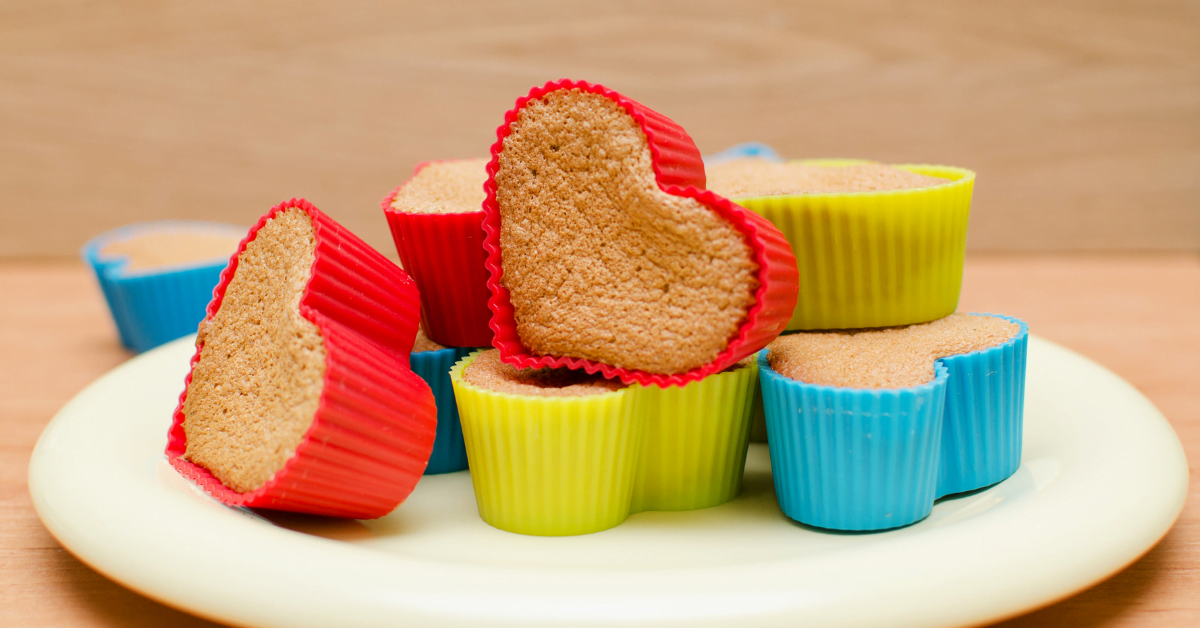
Purity test for silicone cookware
Silicone kitchenware made with pure silicone is safe and has no health risks. Pure silicone does not contain any toxic chemicals, toxins, or carcinogens, so your family’s health is not at risk. Silicone is a quality material and has many benefits. Silicone products are safe on the stove, oven, or induction cooktop. Silicone is also non-stick and has a low water absorption rate, so foods do not absorb the silicone into their pores. Silicone is easy to clean and maintain, making it a good choice for any cookware.
There are many benefits to using silicone kitchenware. Silicone is a non-stick material that can withstand high temperatures without the risk of burning or smoking. Silicone is also extremely durable and heat resistant. It can be used in ovens, microwaves, freezers, dishwashers, and sterilizers. Silicone is also safe for use with many food types and in contact with non-stick pans and metal utensils.
Pure silicone kitchenware is safe to use. If it has a speck of any other foreign material, you need not worry about the safety of the cookware. The purity test for silicone kitchenware is to heat the pan in a pot of boiling water, and if it doesn’t discolor, it is pure silicone.
Purity test for silicone cookware
Silicone kitchenware made with pure silicone is safe and has no health risks. Pure silicone does not contain any toxic chemicals, toxins, or carcinogens, so your family’s health is not at risk. Silicone is a quality material and has many benefits. Silicone products are safe on the stove, oven, or induction cooktop. Silicone is also non-stick and has a low water absorption rate, so foods do not absorb the silicone into their pores. Silicone is easy to clean and maintain, making it a good choice for any cookware.
There are many benefits to using silicone kitchenware. Silicone is a non-stick material that can withstand high temperatures without the risk of burning or smoking. Silicone is also extremely durable and heat resistant. It can be used in ovens, microwaves, freezers, dishwashers, and sterilizers. Silicone is also safe for use with many food types and in contact with non-stick pans and metal utensils.
Pure silicone kitchenware is safe to use. If it has a speck of any other foreign material, you need not worry about the safety of the cookware. The purity test for silicone kitchenware is to heat the pan in a pot of boiling water, and if it doesn’t discolor, it is pure silicone.
Usage of Utensils with Silicone Cookware
Some utensils can be used with silicone kitchenware, such as a fork and spoon. However, if you plan to use your silicone kitchenware for deep frying or braising, you should use a potholder or tongs.
Silicone is safe for cooking because it does not react with food. It also has high heat resistance, making it ideal for use on the stovetop. Silicone is also more resistant to stains and scratches than other materials, making it a perfect choice for families with children who are picky about utensils. Silicone kitchenware is a durable utensil that can be used for cooking. Silicone utensils are safe to use on any stovetop, including induction. Silicone utensils are also safer than metal or glass utensils because they don’t react with foods as metal and glass utensils do. They won’t break into shards of sharp edges that can cause lacerations.
Silicone kitchenware is safe as long as used correctly. When using silicone utensils, the food’s heat will not transfer to the utensils, and it will not be harmful to the utensils.
Silicone kitchenware is less reactive to the chemistry in the food you might be cooking. This means that it’s safer and more efficient to use than other types of cookware. Silicone is also a better conductor of heat and can retain the heat for longer periods than other materials. Silicone kitchenware is a great option for people who are sensitive to BPA-free materials.
Silicone kitchenware is safer than ceramic or stainless steel pans. Silicone can be non-stick and retain its non-stick properties for a long time. Without damaging the surface, it can also be used with different utensils, like knives and spatulas.
Scientific research on silicone baking products
The FDA found silicone kitchenware to be safe and non-toxic. Silicone is a material that is used in many different kitchen products. There is a lot of scientific research on the benefits and uses of silicone cooking molds.
Silicone kitchenware has been in use for many years and is considered one of the safest materials available. It is a chemical-free material that is non-stick and heat resistant. It has the added benefit of being non-toxic, so it can be used with food items that contain high amounts of fat. This process is used to make silicone molds stronger by tempering them. The temperature of the silicone during this process must be between 300 and 320 degrees Celsius.
Silicone molds are fun for making jellies, chocolates, ice cubes, and popsicles. Recent scientific research has shown that silicone is a safe and durable material that is also non-stick.
Research Findings on Silicone Cookware Set: Silicone Cupcake Molds
A study in the U.S. found that silicone bakeware is not as healthy for you as other cookware materials because it contains a toxic chemical. Silicone is an inert, non-reactive polymer that does not release toxic compounds into food. This is because it has a low melting point, so it does not release toxic compounds into food. Silicone also has a high degree of flexibility and elasticity, making it an excellent insulator. This means that silicone cookware is easy to clean and maintain, and it is also non-toxic for use with food.

What does the research say about silicone springform molds?
The use of silicone is a common material for springform molds because it is safe, flexible, and durable. The benefits of using silicone are that it can be used with hot and cold foods and is easy to clean. The downsides of silicone are that it can be difficult to remove the mold from a baked cake if an error was made in baking.
Silicone is a polymer made out of long chains of atoms with a silicone molecule attached to each atom. Silicone is non-toxic and can be easily removed from food without any adverse reactions. Silicone is a durable material for cooking, baking, and storing food. Silicone oven molds will cook faster than Teflon or stainless steel and not stick to the food.
The research found that silicone is a durable material for cooking, baking, and storing food. Silicone is also a non-stick material, and it has even been found to be more effective than PTFE.
What does the research say about silicone universal lids?
A New York investor named Ray Wagner invented the universal silicone lids in the late 1980s. The universal silicone lid is designed to fit on most types of jars, and they can be used for a variety of purposes, such as to keep food fresh. They are also safe to use in the microwave and oven, and they can be easily cleaned. The universal silicone lids have a variety of uses, and they are very cost-effective.
Silicone universal lids are made of silicone. This means that they release no chemicals into the food or water when heated, unlike other materials such as Teflon. Silicone products are made of non-porous silicone that will not react with food or be in contact with any harmful chemicals. They can be heated up to 200-220 degrees Celsius. Their non-porous properties mean that they don’t react with food or contact with any harmful substances. They can also be used with various surfaces such as ceramic, stoneware, and metal.
Why should you buy silicone cookware?
Silicone cookware is a good choice for those who want to avoid non-stick cookware because it’s safer and more durable than other types of cooking utensils. It’s also a good idea to use silicone cookware to avoid scratching or damaging the surface of your pots and pans. This is because silicone can be used on glass, ceramic, metal, and non-stick cookware. Silicone is a durable material that resists heat and scratches well, so it’s often used to coat non-stick cookware.
Silicone is also safe to use on aluminum, stainless steel, iron, or metal-coated glass surfaces. About 90% of the silicone used in the US is in baking aids and food products. Silicone-based bakeware stops cakes and pies from sticking to the bottom of the pan. Slotted turners, spatulas, and brownie cutters in silicone bakeware are cut evenly, and they are easy to clean because the bagel cutters do not release crumbs. When comparing silicone and metal, they are about the same. The main reason people prefer to use silicone is that it is more resistant to heat and is more durable in use. Moreover, silicone cookware cleans up easily with soap and hot water.
Silicone cookware is easy to use and simple. It’s also safe, with no toxic chemicals found in the material, so it’s a healthier option. Ceramics and glass cookware are unsafe for small children. Copper pans and cast-iron casserole and clean cast iron skillets are too heavy. Silicone cookware is safe since it does not conduct heat as other materials do. The silicone is also non-porous and will not retain bacteria or odors.
Silicone can be used for a long time without the worry of breakage. It’s also safe to use on induction cooktops and is easy to clean. Silicone pots and pans are also lightweight and have high heat conductivity. The benefits of silicone pans are that they have a non-stick surface and are easy to clean. Silicone is also dishwasher safe, and some silicone pans can even be put in the oven. Silicone cookware is a good option for many people, but not for everyone. Cake tins can be easier to store with silicone and benefit from not having a metal coil.
Silicone cookware is a relatively new product. It has been around for about 40 years, but it wasn’t until the mid-1990s that silicone cookware took off. Silicone is easy to store and environmentally friendly because it can be recycled and reused.
Which type of silicone cookware should you buy?
No one type is better than the other. It all depends on your personal preference. The best silicone cookware will withstand high temperatures for longer periods and not react with food. For example, if you are looking for a silicone pot and pan set, the best would be to purchase one made of platinum silicone because it can resist high temperatures for a long period.
- Efficient Laundry Tote: Durable Canvas Laundry Bag with Handles - January 25, 2024
- How to Choose the Right Pan Lids: The Complete Buying Guide For Silicone Universal Lids - October 26, 2023
- How To Organize Products In Your Home: Organizing Products Worth Buying - April 7, 2022



